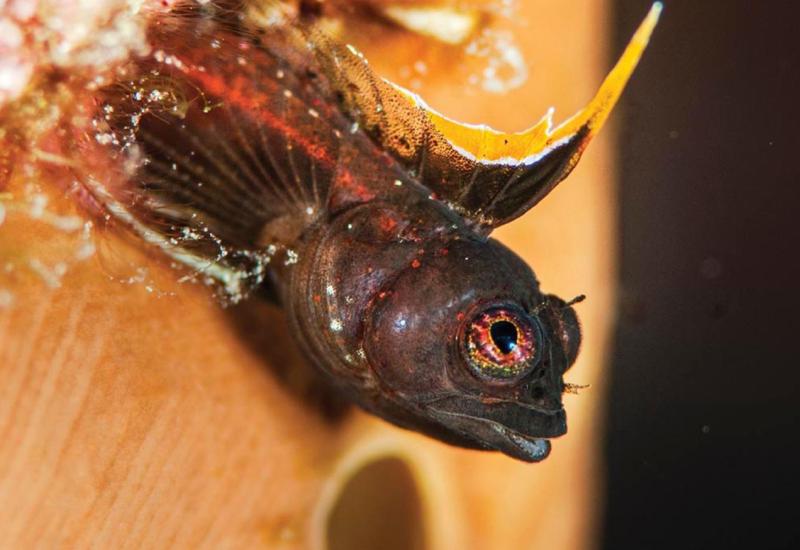Best in Class: Why the Wrecks of Barbados Shine
You can’t euphemize it. In spite of its unique position as the easternmost island of the Caribbean, Barbados is about average, as beautiful tropical islands go.
This is mainly because the lush rainforest that once covered the entire island has been gradually cleared since the 17th century, initially to make way for sugar-cane plantations. Only in Turners Hall Woods, in the middle of the island — perhaps the least disturbed and most biologically rich place on Barbados — is there a remaining ancient stand of forest. Life on the east side is decelerated — not as hectic as Barbados’ busy west coast — and is home to the coral island’s long, sandy beaches lined with hotels and apartments. On the west side, in stark contrast, celebrity villas harbor stars such as Barbados-born Rihanna.
In the island’s interior, numerous caves and subterranean lakes guarantee a supply of fresh water, some of the purest in the world. Bajans — pronounced BAY-jons by locals — have preserved their Creole lifestyle, reflected in the delicious local rum.
So what is the main attraction here? Over the centuries, more than 200 ships have sunk around Barbados. Most have decayed and almost disappeared due to their wooden construction. Those that remain, primarily from the past 100 years, are mostly intact, true jewels of the Caribbean, just waiting to be explored by divers.

Tobias FriedrichStavronikita
Perhaps Barbados’ most famous wreck is the SS Stavronikita. A single dive is nowhere near enough to get to know this fantastically overgrown piece of metal. The 365-foot-long Greek freighter — one of the largest wrecks in the Caribbean — was purpose-sunk in 1978 and stands upright on the sand at about 120 feet. Its masts and cross struts are overgrown with huge gorgonians — few wrecks in the world can compete with such dense growth. Look for swarms of mackerel and barracuda that have preferred this habitat for nearly 50 years.

Tobias FriedrichBerwyn
One of the oldest wrecks in Barbados’ Carlisle Bay is the Berwyn, sunk in 1919. During World War I, this French tugboat sought shelter in the bay near Bridgetown after being fired on in battle. According to rumor, the crew went ashore to celebrate the failed attack with Barbadian rum, and decided to skip the rest of the war. They went back to their ship, opened the sea vents, and let it sink to the shallow seabed. Whether the story is true is difficult to verify, but it’s certain that sea creatures have found a great habitat here for almost 100 years and have abundantly populated the wreck, which is overgrown with sponges and corals.

Tobias FriedrichBrianna H
One of Barbados’ newest wrecks, the Brianna H, sank on the morning of August 4, 2014, not far from Carlisle Bay. The almost-180-foot-long ship had been in a desolate state; every day large amounts of water had to be pumped out of its fuselage. After a rainy weekend, disaster could not be averted, and the Brianna H sank to about 80 feet. Its galley is still almost completely equipped, with plenty of pots, cups and items on shelves. On the bridge, there are still documents such as the ship’s safety service manual. Penetration should be reserved for experienced wreck divers because there are many places a diver could easily get snagged.

Tobias FriedrichBajan Queen
In 2002, two other wrecks were sunk in Carlisle Bay: the Cornwallis, torpedoed during World War II by a German submarine and moved from a busy part of the bay to nearer the other wrecks, and the Bajan Queen (above), the largest wreck in the bay at just over 120 feet. Bajan Queen can be penetrated; inside are two well-maintained diesel engines and a spiral staircase, interesting and easy to dive. This is also a great wreck for snorkelers because the wreck begins only a few yards below the surface.
Need to Know
When to Go: Barbados is divable year-round. The dry season is December to May; in the rainy season, it’s slightly cooler.
Dive Conditions: Conditions are consistently easy for beginners. To penetrate the wrecks, you should be more experienced and properly trained.
Dive Operator: Sandals Resort Barbados, an all-inclusive where diving comes with your package.
Price Tag: Starts from $239 per person per day.
Travel Tip: Save a day for an island tour with a private driver to explore nature and the east coast. Getting out in the evenings to experience street life and local bars and restaurants, to get a real feel for the island, is practically mandatory.










